
Stingray Group Inc
TSX:RAY.A


| US |

|
Johnson & Johnson
NYSE:JNJ
|
Pharmaceuticals
|
| US |
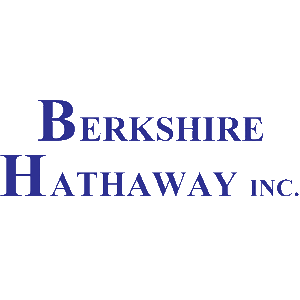
|
Berkshire Hathaway Inc
NYSE:BRK.A
|
Financial Services
|
| US |

|
Bank of America Corp
NYSE:BAC
|
Banking
|
| US |

|
Mastercard Inc
NYSE:MA
|
Technology
|
| US |

|
UnitedHealth Group Inc
NYSE:UNH
|
Health Care
|
| US |
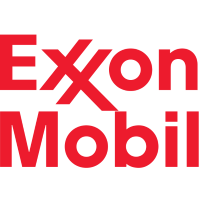
|
Exxon Mobil Corp
NYSE:XOM
|
Energy
|
| US |
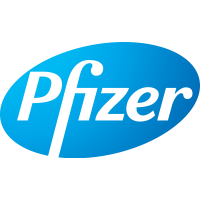
|
Pfizer Inc
NYSE:PFE
|
Pharmaceuticals
|
| US |

|
Palantir Technologies Inc
NYSE:PLTR
|
Technology
|
| US |

|
Nike Inc
NYSE:NKE
|
Textiles, Apparel & Luxury Goods
|
| US |

|
Visa Inc
NYSE:V
|
Technology
|
| CN |

|
Alibaba Group Holding Ltd
NYSE:BABA
|
Retail
|
| US |

|
JPMorgan Chase & Co
NYSE:JPM
|
Banking
|
| US |
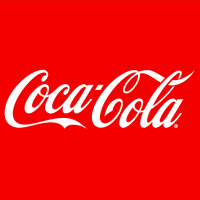
|
Coca-Cola Co
NYSE:KO
|
Beverages
|
| US |

|
Walmart Inc
NYSE:WMT
|
Retail
|
| US |

|
Verizon Communications Inc
NYSE:VZ
|
Telecommunication
|
| US |

|
Chevron Corp
NYSE:CVX
|
Energy
|
Utilize notes to systematically review your investment decisions. By reflecting on past outcomes, you can discern effective strategies and identify those that underperformed. This continuous feedback loop enables you to adapt and refine your approach, optimizing for future success.
Each note serves as a learning point, offering insights into your decision-making processes. Over time, you'll accumulate a personalized database of knowledge, enhancing your ability to make informed decisions quickly and effectively.
With a comprehensive record of your investment history at your fingertips, you can compare current opportunities against past experiences. This not only bolsters your confidence but also ensures that each decision is grounded in a well-documented rationale.
Do you really want to delete this note?
This action cannot be undone.

| 52 Week Range |
7.29
15.145
|
| Price Target |
|
We'll email you a reminder when the closing price reaches CAD.
Choose the stock you wish to monitor with a price alert.

|
Johnson & Johnson
NYSE:JNJ
|
US |

|
Berkshire Hathaway Inc
NYSE:BRK.A
|
US |

|
Bank of America Corp
NYSE:BAC
|
US |

|
Mastercard Inc
NYSE:MA
|
US |

|
UnitedHealth Group Inc
NYSE:UNH
|
US |

|
Exxon Mobil Corp
NYSE:XOM
|
US |

|
Pfizer Inc
NYSE:PFE
|
US |

|
Palantir Technologies Inc
NYSE:PLTR
|
US |

|
Nike Inc
NYSE:NKE
|
US |

|
Visa Inc
NYSE:V
|
US |

|
Alibaba Group Holding Ltd
NYSE:BABA
|
CN |

|
JPMorgan Chase & Co
NYSE:JPM
|
US |

|
Coca-Cola Co
NYSE:KO
|
US |

|
Walmart Inc
NYSE:WMT
|
US |

|
Verizon Communications Inc
NYSE:VZ
|
US |

|
Chevron Corp
NYSE:CVX
|
US |
This alert will be permanently deleted.







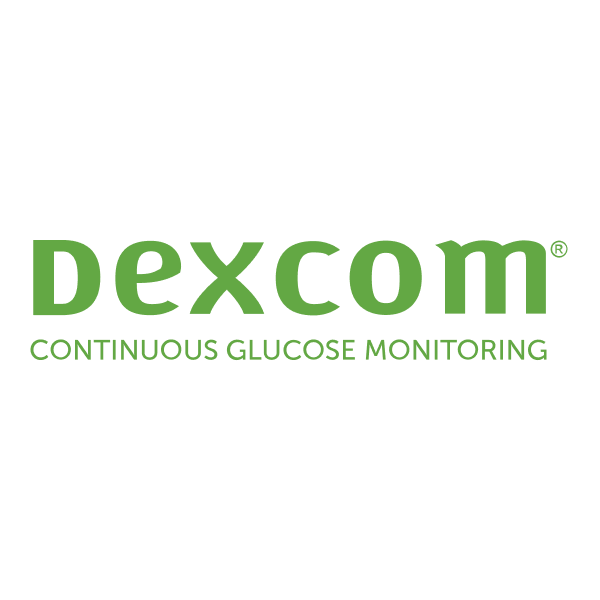

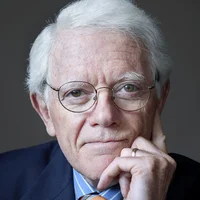





























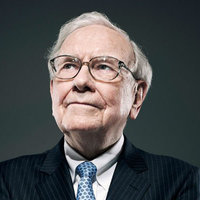
Good morning, ladies and gentlemen. Thank you for standing by. Welcome to Stingray Group Inc.'s Investor Presentation Conference Call. [Foreign Language][Operator Instructions] Before turning the meeting over to management, I would like to remind everyone that this conference call is being recorded today, February 6, 2020.I will now turn the conference over to Mathieu Peloquin, Senior Vice President, Marketing and Communications. Please go ahead.
Thank you. [Foreign Language] Good morning, everyone. Thank you for joining us for Stingray's conference call for the third quarter results ending December 31, 2019. Today, Eric Boyko, President and CEO and Co-Founder; and Jean-Pierre Trahan, CFO, will be presenting Stingray's financial and operational highlights.Our press release reporting Stingray's third quarter of fiscal 2020 results was issued yesterday after the market closed. Our press release, MD&A and financial statements for the quarter and the full year are available on our investor website at stingray.com and on SEDAR.I will now give you the customary caution that today's discussion of the corporation's performance and its future prospects may include forward-looking statements. The corporation's future operation and performance are subject to risks and uncertainties and actual results may differ materially. These risks and uncertainties include, but are not limited to, the risk factors identified in Stingray's annual information form dated June 27, 2019, which is available on SEDAR. The corporation specifically disclaims any intention or obligation to update these forward-looking statements, whether as a result of new information, future events or otherwise, except as may be required by applicable law. Accordingly, you're advised not to place undue reliance on such forward-looking statements.Also, please be reminded that some of the financial measures discussed over the course of this conference call are non-IFRS. Please refer to the MD&A for a complete definition and reconciliation of such measures to IFRS financial measures.As well, I would like to highlight that on April 1, 2019, the corporation adopted IFRS 16, Leases, using the modified retrospective method. Under this method, the standard is applied retrospectively and the comparative figures from fiscal 2019 are not restated. Please refer to the new standard adopted by the corporation section of the MD&A for future details.Finally, let me remind you that all amounts on this call are expressed in Canadian dollars, unless otherwise indicated.With that, let me turn the call over to Eric.
Good morning, everyone, and welcome to our Q3 results conference call. Before I comment on the quarter, I would like to say a few words regarding the death of one of our company's founder and long-serving former member of the Stingray Board of Directors, Mr. Jacques Menard. Mr. Menard was a distinguished businessman, philanthropist extraordinaire. He was instrumental in both funding and founding Stingray in 2007, as a CEO investor and guiding the corporation through all stage of growth, including the successful IPO in 2015. On behalf of our Board of Directors, management team and employees, we extend our deepest sympathy to the Menard family. He will be greatly missed by everyone. [Foreign Language]Okay. Now for Q3. We are pleased to -- by the overall performance of our business segment in the quarter. Our revenues rose 15% driven by the acquisition of NCC and healthy subscription growth mainly in the U.S. market. Cash flow from operating activities increased by 109% to $28.8 million. Our solid cash flow generation, coupled with a positive business outlook, lead us to increase our dividend to $0.075 per share, 15% above the same quarter last year. Furthermore, we took advantage of all -- of attractive share price to acquire $6.1 million in shares during the quarter and $8 million year-to-date. As indicated in the past, we balance our capital allocation strategy to support our growth and return cash to our shareholders. By way of dividend and NCIB, we have returned close to $24 million to shareholders so far this year.Looking at our business segment. U.S. delivered adjusted EBITDA margins of 42%. Despite challenging market conditions out west, Toronto and Ottawa markets continue to perform very well. Organic growth for both Broadcasting, Commercial Music revenues stood at 3.3%, excluding foreign exchange, primarily due to the increase in subscription.What we are observing now is that the old-fashioned linear TV appears to be making come back with the over-the-top world. As over-the-top streaming trend accentuates and viewers are overwhelmed by new TV streaming services, FAST and free ad-supported TV platforms are also gaining momentum amongst viewers and reaching an inflation point.Stingray is actively pursuing this pivot. In Q3, we have launched a number of initiatives for free ad-supported new channels on connected TVs and over-the-top streaming services. Ambiance and Qello Concerts are now available on Samsung TV Plus, and other channels will be added soon. Just to give you an idea, Samsung represents a potential of 60 million connected TVs around the world. We've also deployed a number of channels on XUMO/LG, Pluto TV and STIRR. All these new digital networks require content, Stingray is extremely well positioned to leverage its audio and TV linear channels, significantly expand its share of advertising dollar and reach million of new listeners.As another indication of our rapidly evolving business model and mix, the subscription model B2C -- B2B2C now generates annualized revenues north of $40 million. We will continue to expand distribution to new platforms and markets and deliver new innovative products. We look forward to this new year with great confidence as we continue to expand the reach of our rich content to new platforms and further diversify our revenue source to ad- and subscription-based model.We have resumed our M&A activities with the acquisition of Chatter Research, positioning our Stingray business offering for continued expansion and growth.Lastly, on February 3, 2020, Stingray Music Choice executed and exchanged a settlement agreement which puts a definitive end to the -- to all parties' patent ligation in the United States and fully and finally settles all claims, counterclaims and defense asserted in connection with that litigation. The settlement amount is USD 13.3 million, will be paid in 2 equal payments.With this in mind, I will now transfer you to our partner, Jean-Pierre.
Thank you, Eric. Good morning, everyone. In the third quarter of fiscal 2020, our revenues increased 14.9% to $81.3 million compared to $70.8 million a year ago. The increase was primarily due to the acquisition of NCC combined with organic growth in subscriptions.Broken by geography, revenues in Canada rose 23.1% to $57.5 million, representing 70.7% of total revenues, reflecting the contribution of NCC. In the United States, revenues rose 8.4% to $9.6 million or 11.8% of total revenues due to organic growth in subscriptions. Finally, revenues in other countries decreased 6.4% to $14.2 million or 17.5% of total revenue due to lower commercial music sales in Europe and due to termination of some low-margin contracts.Looking at our performance, the business segment basis, Broadcasting and Commercial Music revenues increased 2.6% in the third quarter to $39.9 million primarily due to organic growth in subscriptions. Radio revenues stood at $14.4 million (sic) [ $41.4 million ] in the third quarter, up 32.7% due to contribution of the NCC acquisition starting on October 26, 2018.Consolidated adjusted EBITDA for the third quarter increased to $31 million compared to $27.2 million a year ago. The increase in adjusted EBITDA was primarily due to the adoption of IFRS 16, to the acquisition of NCC, to organic growth in subscriptions and to reduced operating expenses in Broadcasting and Commercial Music segment, partially offset by the reversal of certain accrued liabilities in the Radio segment that occurred in Q3 2019. Excluding the impact of IFRS 16, the adjusted EBITDA for Q3 2020 would have been $29.3 million with a margin of 36%.By business segment, Broadcasting and Commercial Music adjusted EBITDA increased 12.3% to $14.9 million compared to $13.2 million last year. The increase was primarily due to organic growth in subscriptions, to reduced operating expenses and to the adoption of IFRS 16. Adjusted EBITDA margin increased to 37.2% from 34.1% a year ago.As for the Radio segment, adjusted EBITDA stood at $17.4 million in the third quarter of 2020 versus $15.1 million in the prior year, reflecting the contribution of the NCC acquisition starting on October 26, 2018. Year-over-year, the lower EBITDA margins reflect the impact of the reversal of certain accrued liabilities which positively contributed to the adjusted EBITDA of the Radio segment in Q3 of last year.On the bottom line, the corporation recorded net income of $8.1 million or $0.11 per share for the third quarter compared to a loss of $18.1 million in the prior year. The difference was mainly due to the nonrecurring CRTC tangible benefits expense of $25.3 million related to the NCC acquisition recorded in Q3 2019. The difference is also explained by lower acquisition expenses, positive change in mark-to-market on derivative instruments, positive change in fair value of investments and higher operating results, partially offset by higher legal expenses due to the settlement with Music Choice and higher income tax expense.Adjusted net income was $16.7 million or $0.22 per share compared to $12.4 million or $0.18 per share a year ago, mainly due to higher operating results and to the gain of -- in foreign exchange, partially offset by higher income taxes.As Eric mentioned, we recorded very strong cash flows in the quarter. Cash flow generated from operating activities amounted to $28.8 million in the third quarter of fiscal 2020 compared to $13.8 million a year earlier. Adjusted free cash flow amounted to $21 million in the third quarter compared to $17 million for the same period a year ago. The increase was mainly related to the acquisition of NCC, to higher operating results and to lower capital expenditures.Turning to our balance sheet. At the end of the third quarter, the corporation had cash and cash equivalents totaling $7.3 million and subordinated debt of $39.6 million and credit facilities of $314 million. Total net debt at the end of the quarter stood at $346.5 million or 2.94x adjusted EBITDA and $12.5 million decrease compared to last year.I will now turn back the call to Eric.
Okay. This concludes our remarks for today. Thank you for your time and attention. At this point, Jean-Pierre and I would like -- will be pleased to answer any questions that you may have. After questions, thank you for joining us on this conference call -- and I'm reading the script of the other person. Okay. Thank you.
[Operator Instructions] Our first question comes from Adam Shine from National Bank Financial.
Maybe we can start with the news of a day or 2 ago in terms of Music Choice. I know you addressed it and you had it in the disclosures yesterday. But maybe a little more color and background because I think a lot of us anticipated that this thing would get resolved potentially sooner than later because you had opted not to go to trial, but that -- the amount is perhaps more than anticipated. So maybe you can just talk around that. And then 1 or 2 more questions, please.
Okay. And let's say because this is a litigation and legal, it's one of the few things I'm not allowed to talk about too much. At the end of the day, the amount is $13.3 million, roughly CAD 17 million. And we'll get a tax savings between $5 million to $6 million. So it's paid over 2 payments. On a cash flow basis, no impact for the next 12 months.
Okay. And as it relates to your ability to compete in the U.S. against Music Choice, the presumption there is that, that can continue, that this settlement doesn't preclude that and that -- anything related...
An important part of the settlement was to settle everything as described in my -- allocation, known, unknown, any claims that we have with Music Choice. So that was one of the reasons to try to move on and focus on the business.
So whatever relates to Canada as to any particular litigation is, I think, significantly more innocuous than whatever was happening stateside. Correct?
Exactly. The patent lawsuit is only U.S.-based. Canada is another small case. Canada, as you know, legal fees are nonmaterial. For this case, we've reserved about less than $150,000 for all legal fees. So not the same. Don't forget, so we spent so far close to $12 million in legal fees. That's been in our books over the last 3 years. So the U.S. -- for sure, the U.S. market, when it gets to legal fees, is very expensive.
Okay. And just when we look at ad revenue, as it relates to the non-NCC business, maybe you can help a little bit there because I would have thought that we would have seen a bit more incremental advertising traction on the back of the AUDIO360 that got launched sort of end of your 2Q. So I don't know if you got some disproportionate benefit somehow over on the Radio side or whether maybe more traction is ahead in the calendar 2020.
So that's a very good question. I think we did $800,000 this quarter. So we have a run rate of $3.6 million. We're confident in this quarter that we should reach $1 million to $1.2 million to have our goal, like we said to the market, to reach $5 million. We've launched a lot of our channels in December with Samsung, with LG. So I think that we're going to see the results coming in. Connected TVs, like I said, Samsung alone is 60 million connected device in the world. And the role of Stingray is to launch in every country. So I think advertising, for sure, will be our biggest vector of growth over the next 3 to 5 years.Regarding AUDIO360, AUDIO360 is a concept with the agencies. It's not something that we sell for $50,000. There were more contracts between like $1 million to $8 million. So these contracts take time to put in place. It's a new offering. It's very positive. We're meeting all the companies. But I think we'll see traction with AUDIO360 only starting next year and starting in Q1, April next year.
Your next question comes from Drew McReynolds from RBC.
Maybe just a clarification on the subscription side of it. Can you just break that down into perhaps SVOD and other types of subscription in that base that you provided?
Yes. So the 392,000 subscribers are really just SVOD, both B2C and B2B2C. We don't include any AVOD in those numbers. So this is really subscription-based revenues. We see the AVOD model and advertising linear increasing. So -- and we're very -- good question there. Our ARPU is at $9. So we're generating $3.6 million a month. When we started the SVOD strategy, our goal that we told the market was that we wanted 500,000 subscribers at $5. So we've already surpassed that goal by almost, I should say, 40%.
In terms of revenue.
Yes, in terms of revenue. So we're very happy with the SVOD, and we're happy with the momentum.
Okay. No, that's great. And maybe on the Radio side, I think everyone on this call is pretty eyes wide open to being a tough quarter for Radio. Can you just comment on the organic revenue growth in the quarter and then what you're seeing kind of in terms of the outlook? Presumably, Western Canada stays weak-ish until Alberta turns around, but maybe some additional granularity there.
Yes. Radio organic sales were minus 4%, minus [indiscernible]. So the good news is we beat the market if you look at the TRAM report and the results, of course. So we're performing better than the market. But when the stock market is down 10% and you're minus 5%, you're still not happy. So I think that our biggest strategy on the Radio side is the digital wrap. So we started selling digital ads with our radio ads. That business should be doubling. It was very small. But I think starting next year, the digital ad business could give us -- could compensate for the softness in the Radio sales. Also, the AUDIO360, a lot, a lot of interest. It's -- that platform is we're selling radio, TV, podcast and digital and mobile. So we're seeing a lot of interest, and I think that both Bell and us are working well together on this national project.
Okay. And on that AUDIO360, the revenues that ultimately get generated from that, does it all flow into Radio? Or do you carve it out into different segments?
Roughly, when -- the way we sell it, 70% goes to Radio, 20% goes to, I would say, TV and then digital and then 10% to mobile. So most of the revenues would go in Radio.
Okay. That's great, Eric. Two final ones for me. On the metro contract that you alluded to, was there any revenue contribution from that in the quarter?
Yes. We started the deployment in December only, so we'll see the results more coming up. For sure, Stingray business has a very high growth for us right now. We're doing -- that segment is outperforming the 5% organic sales. And we continue to pursue the business to grow. The Chatter acquisition is a unique proposition because now we're able to offer our clients both digital, music and survey. And the Chatter products roughly retails up to $50 of RMR per store. So it's a great business model for us. So excited about Stingray business.
Okay. Last one then for me on the M&A environment. I know you've alluded to in the past maybe passing on some deals just for valuation purposes. Maybe just provide an update on where that pipeline sits as of today.
Yes. We still have a very strong pipeline. Our team is doing well. In our space, a lot of companies that are not generating money are looking for funding or selling. So I don't want to go too much in details, but we have -- there's a lot of movements and gives us good opportunities for us to make certain acquisitions, both Canada, U.S. and Europe. So we continue seeing some acquisitions.
Your next question comes from Maher Yaghi from Desjardins.
I wanted to ask you in terms of your organic growth expectations. If you were to square a little bit the growth that we saw in the quarter, split it Commercial versus your Broadcasting activities, what are your expectations in terms of the Broadcasting specifically? You mentioned that Commercial is growing nicely. But on the Broadcasting side, are there new territories you're launching SVOD in, in the next couple of quarters that can help in increasing the growth? And also other platforms that you're looking to launch on -- or cable companies that you're discussing with? Just trying to figure out what's ahead of there.
Okay. So for sure, we mentioned -- recall, we're doing the pivot. For sure, the CPS model, the model of getting a cost per subscriber, the good old model that TV was based on, that model is changing, pivoting to ad-based and subscription-based. So for sure, in Europe, Europe was tough for us. So Europe, we're having a tough time. It's not a big business for us, Europe, but still, Europe was -- organic sales were negative. That's why it offsets the improvement in SVOD.For the future, we are very confident that we'll be able to deliver 5% organic sales. That's the #1 KPI of the group. Even to mention, we're ready to sacrifice a few EBITDA margin points for an increase in organic sales. So I'll still maintain the 5 5. And I think once we -- once the pivot moves forward over the next few quarters, that number should increase.
Okay. And in terms of the buyback, you've been very active on the stock buyback in the last couple of months. Definitely, the stock price is the reason why you've been so active. It's been under pressure. How much are you willing to commit in terms of the buyback? And given your leverage is at around 3x right now, what's your objective for that ratio to be declining before the end of the year?
Yes. So very good questions. So for sure, at this share price, Stingray, on a daily basis, is acquiring shares. And we feel confident to -- we're allowed to buy 3 million shares this year. And if the share price stays at this amount, I think we'll fully execute the 3 million shares. This will bring the outstanding shares of Stingray from 76 million to 73 million. We'll generate $1.10, $1.20 per share of cash flow this year. If this starts trading at $6, when we buy our shares, it's a 20% return.Also, at the same time, we feel confident that we'll be able to deleverage the company by about 10 points. So one of our goals is to be at 2.5% EBITDA over the next year. So we're focusing also on deleveraging the balance sheet.Since we're making $80 million of free cash flow, we're able to both repay the debt, increase our dividend and do an NCIB. So -- and if you think about it, just -- I know it's a long answer, but the dividend on the $6 share is 5%. We told the market that we secured $300 million of funding at 3%. So it's a no-brainer for us to buy back our own shares.
Yes. I agree. And the last question I had is on the Commercial Music side. You've been adding more and more features to improve your product offering. Are we to expect additional acquisitions to improve the product itself? Or more -- you think you have all the tools necessary now to become more active in the space selling the product?
Yes. Very good question. So the Chatter acquisition -- and I think you'll see over the next couple of weeks and months, the number of new deals that we're doing will add significant organic sales to Stingray. Also, it gives us the chance by doing the surveys, that we're not only working with procurement when we're dealing with big companies, we work with the CMO, so we're able to offer them the digital signage, the experience, the music and the survey. The survey business in the retail market is a $44 billion potential. And Chatter is a very unique product, so very confident about the Stingray business over the next few years.
Your next question comes from Tim Casey from BMO.
Yes. A couple for me. Eric, can we just go back to Music Choice? I mean have I got my -- you said there is no impact on cash flow, but it seems like this is basically about a $30 million cash outflow. $12 million or so you've already spent, and there's another $17 million or so to be paid over the next 12 months. Is that correct?
Yes. So just to confirm, the $12 million of legal fees that we paid, that's been paid over the last 3 years. So that's already in our books. So it's not a -- there's no more cash flow for that part. The settlement is around roughly $17 million, so $8.5 million now, $8.5 million in a year. But we're able to deduct everything from tax purposes. So we're able to get $5 million in savings in our taxes for -- income tax for Canada for this year.
After tax.
So it's -- we're looking at $12 million. And also, we get an extra saving of $5 million because we're not going to be doing installments for next year. So on a tax purpose basis, it's good news. I know it's not good news, but it's good news for tax purposes.
So net, it's about $12 million yet to go.
No. Net is closer to $11 million, $11 million to $12 million. But we're saving this year $5 million of taxes that we would have paid in March.
Yes. Well, if -- but it's $17 million less the $5 million, right?
Yes.
But we only paid half of it. So this year, cash flow-wise, it's $8.5 million minus $5 million. So the cash flow for this year is only $3 million. And then we're saving $5 million of installments. So technically speaking, on a cash flow basis for the next 12 months, we're -- it's neutral.
[indiscernible]
And most important -- yes, okay. I agree with you, Tim.
On the M&A side, do you want to reframe that, you said you're seeing opportunities in companies that don't make any money and don't generate any cash. I mean, do you really want to buy an entity like that? Like how should we think about that -- those M&A opportunities?
Yes. So a lot of smaller companies have good gross margin, gross profit, but because of their structure and their G&A are not generating EBITDA. We have a lot of savings. So we have a strong pipeline that we presented to the Board yesterday of these small tuck-ins that generate -- that could generate for us a lot of good EBITDA, but we're able to get at a good price. So...
It's a traditional model where you buy the revenues but not the costs. Is that what you're suggesting?
I would say exactly. We've got to be careful because we don't want to scare the companies that we're looking to buy. But we have a lot of scalability at Stingray, where it's at right now.
Okay. Last one for me. I just want to push back on your overall tone that you're pleased with the quarter and -- because when I look at the growth metrics, it looks like it slowed dramatically in the quarter. I mean recurring revenue was up 10% through the first half of the year, only up 1%. Organic growth, you highlighted 3%, you target 5%. Europe was up 20% through the first half of the year, down 6% in the third quarter. The U.S. growth rate slowed by about half. I mean what's going on? Why the -- in a seasonally important quarter like Q3, why the weakness here?
Yes. So again, Tim, I agree with you 100%. Our #1 KPI as management and the Board is to achieve 5% organic sales. But note, the TV business is seeing some headwinds. The U.S. market, even if we're not very present in the U.S. market, for us, it's -- on the TV side, the U.S. market is expected to lose 17% of their subscribers this year. So -- and I think we are lucky that we started the pivot 2, 3 years ago. And out of our $300 million of sales, $320 million, we only have left $40 million of subscription revenues -- sorry, CPS revenues. But for sure, the SVOD numbers and the streaming business is offsetting the decline in subscribers in the U.S. and the same thing in Europe. So I think we'll have another quarter. And then I think starting next year, the negatives will be out. And I think we'll be in north of the 5%. Is that a good answer?
Yes. You said U.S. market could lose 17% at subs this year. What's your expectation for Canada?
Canada is -- because of the CRTC and the regulation and also the fact that all the content is owned by the 4 biggest cable operators, it's much less than the U.S., I think I'd say between 2% to 4%. In Canada, where we have the advantage that we see growth, as you noticed, we started advertising on our video channels. So that should give us -- in Canada, we expect to have organic sales above 5%, even while losing subscribers because of the advertising, our commercial offering. And also, we've launched SVOD with most of our customers, and the implementation of the X1 platform. So very positive regarding Canada.But the U.S., we're doing the pivot. But lucky that we did not invest more in a CPS model because it's really -- if you look at the numbers in the U.S., it's -- but we're gaining everything on the connected TV side. So the fact that we're with Samsung, Pluto, XUMO, STIRR is offsetting the decrease of subscription in the U.S. subscribers. Is that good? Thanks, Tim.
Your next question comes from Matthew Lee from Canaccord Genuity.
So maybe just a housekeeping question to start. Is it fair to say that on the IFRS impact on EBITDA, it's about $1 million for Radio and $700,000 for Music Broadcasting?
Yes. It's about $1.5 million a quarter, $6 million a year.
I mean based on the segment.
Yes, exactly. $1.2 million and $400,000 on our side.
All right. And then did I hear correctly that you expect $1.10 per share in free cash flow for F '21. Can you maybe walk us through how you get from mid-$0.90 to $1.10?
Well, in the last 3 quarters, we've generated roughly almost close to -- how much, JP, in the last 3 quarters? This quarter, how much?
Free cash, $21 million.
So this -- free cash flow this quarter is...
$21 million.
Okay. No, I'm looking at per share.
Per share?
Yes. Per share, roughly we're generating $0.28 right now.
Sorry, $0.28 this quarter. Last quarter, $0.25. And $0.27, June.
So you do that times 4, you have a run rate of $1.10. So we're very...
You think Q4 usually have a smaller quarter? I mean last Q4 '19...
It is smaller, but every quarter, we're able to offset with taxes. We're able to offset with lower interest rates. So it increases our cash flow. So as you saw, this quarter, we generated $28 million of operational free cash flow. It's pretty incredible. So I think we're able to cut our OpEx, manage our rights and which generates this -- so if you look at $80 million of free cash flow and you look at 72 million shares, roughly $1.10.
And that's for 2020.
Yes, roughly. I mean we'll see how the numbers finish, and we'll see the taxation, but we're in that range.
That's great. And then just on the Radio side, do you still see significant cost-saving opportunities there to improve margins for 2021?
Yes. For sure, for sure. Every radio operator, not only in Canada but in the U.S., is, how can we say, optimizing their business. So yes, I think we'll have some more cost savings coming. For sure, digital helps us. So yes, we should expect some more synergies and some more -- I mean Radio business generating 42% EBITDA margin, it's a pretty good EBITDA margin business.
Your next question comes from Edson Lai from Stifel GMP.
Could we go back to SVOD in terms of the growth rate? I think in your opening remarks, you said B2B and B2B2C was roughly a $40 million business now. But I think the last reported SVOD number we had was in Q4, which was roughly $10 million. And if you annualize that, that implied no growth. So any color on the growth rate on SVOD would be helpful.
Yes. So roughly, we have 392,000 subscribers at the end of December at a $9 ARPU, so $3.6 million a month. So if you do $3.6 million times 12, it's a $42 million business, $42 million, $43 million. So -- and we continue to expect growth. Both our Amazon channels, a lot of the over-the-top are expanding, and we're expanding our product offering around the world. So we are confident about the strength of the SVOD model, and we're happy with the ARPU.
Okay. But was Q4 '19 not a $10 million business, which would imply a $40 million run rate?
Q4 '19...
Yes.
I have to get back to you later.
[ It's 364 ]...
We start with the total revenues for the quarter. I have to get back for Q4 '19 what the SVOD revenues were. Roughly, we're at 10%. If we're up 10%, that means last year...
2.4.
So we're up 10% from last year.
Okay. And then the last question for me is related to advertising. So if you guys hit your 5% organic growth rate, how do you guys carve that out in terms of the different segments, in Radio, AVOD, Mobile, Commercial? Where is that 5% going to get allocated? And where do you guys see the most opportunity?
Yes. The question of -- right now, we have very, very good momentum in Stingray business with all our products, so very well positioned. And then for sure, we see a strong growth of the SVOD. But our CPS model, that model is declining as for all the markets. It's a smaller amount. It's only $20 million around the world, excluding Canada. And advertising is -- I don't want to say this, but advertising is going to be 80% to 90% of the organic growth over the next 3 to 5 years.Just in terms of connected TVs in the U.S., advertising in the U.S. on connected TV, Samsung, LG, XUMO, is expected to go from $13 billion to $20 billion. And we just started launching those channels. And that's going to be -- we're launching them worldwide. So Stingray is uniquely positioned that we have worldwide rights with Qello, Karaoke, Classica, DJAZZ, Ambiance, to launch these channels around the world. So we're excited about that. And we're also going to Korea in 2 weeks to expand the relationship with both Samsung and LG.
We have no further questions. I turn the call back over to the presenters for closing remarks.
Okay. Thank you very much for your time today. I appreciate -- I know you guys have a lot of companies you follow. So I appreciate the fact that you're -- you continue supporting us and very good questions. So have a nice day, everybody.
Ladies and gentlemen, this concludes today's conference call. You may now disconnect.